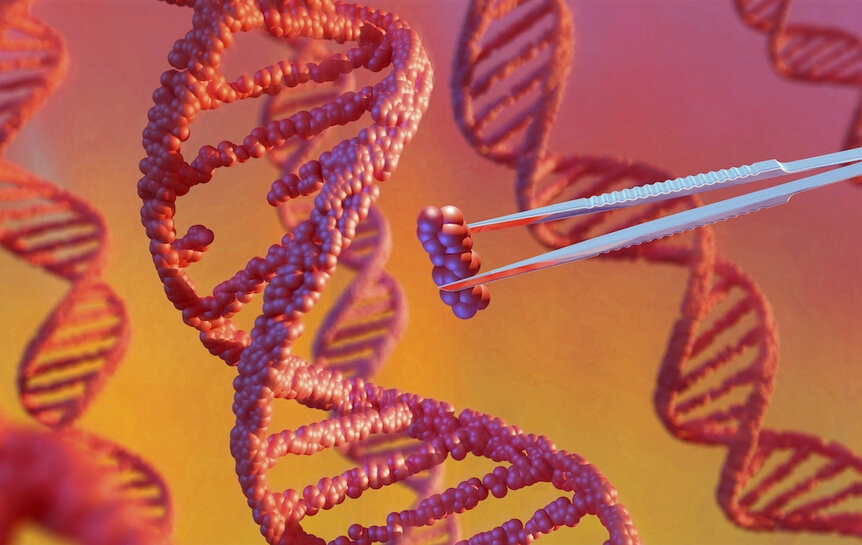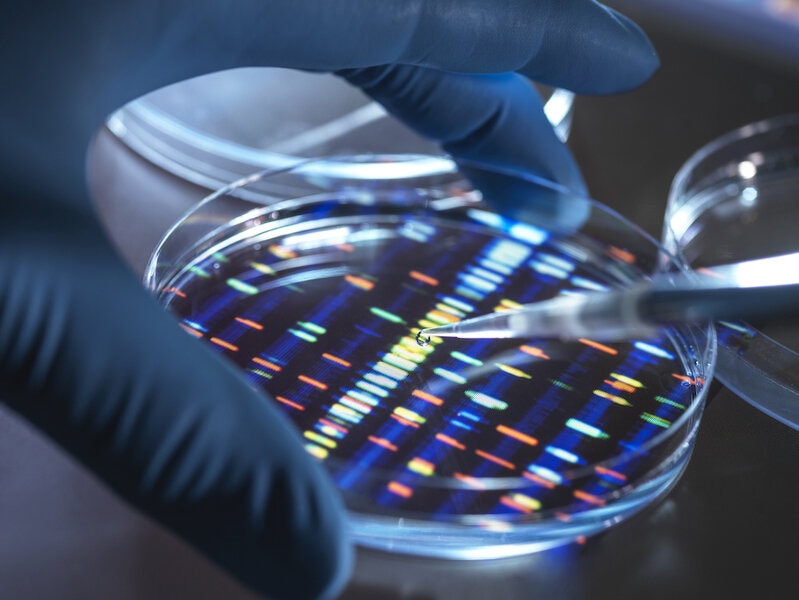Create a free profile to get unlimited access to exclusive videos, sweepstakes, and more!
Predicting the genetic future: The science behind 'Gattaca'
Are your genetic dice cast the moment you are born?

Twenty-five years ago this week, moviegoers were treated to Andrew Niccol’s science fiction classic Gattaca. The movie was a commercial flop, earning only $12.5 million at the domestic box office against a budget of $36 million. Its value as a catalyst in conversations about genetic engineering, however, is invaluable and its themes hinted at in the title itself. The name Gattaca is taken from the four letters we use to identify the four types of bases in DNA, GATC.
The movie takes place in an undefined future wherein genetic science has evolved toward its worst ends. Society is broken up into “Valids” and “In-Valids,” denoting those who were conceived through genetic engineering and those who weren’t. The subsequent societal structure is therefore composed of two classes: the genetic haves and the have-nots.
At the moment of birth our protagonist, Vincent Freeman, had a drop of blood taken from the heel of his foot. That drop was analyzed only seconds after the first breath was drawn, and the rest of his life was determined. Using the information stored in his DNA, doctors were able to determine the time and nature of his death. He was doomed to die of a heart condition at the ripe old age of 30.2 years old. In this society, that information would forever burden Vincent, constraining the opportunities he would have available and the type of life he would lead. All that trouble for a drop of blood. Surely these are only the imaginings of a terrible science fiction world and not an inevitable eventuality for us all, right?
DESIGNER GENETICS
The world of Gattaca hinges on two major premises. The first is that we can and will reach a point when new humans are designed from the ground up. In this world, genetic engineering will allow us to remove mutations that lead to disease and make our children stronger, smarter, and healthier. At least if you can afford it.
It goes without saying but bears repeating that this line of thinking, while possible, has some considerable moral failings. At the individual level the act of reducing or removing the probability of illness during a person’s lifetime, giving them the best possible start, feels noble. But it has the potential to result in precisely what Gattaca attempts to warn us away from, a future world in which hard lines can be drawn about people, their potential, and their opportunity at a genetic level. That said, the immorality of a thing never stopped us before so it’s something worth examining.
When CRISPR first hit the scene, the notion of designer babies went through something of a revival. Gene editing tools seemingly gave us the ability to realize something we had only previously imagined. Suddenly, doctors could see a path toward removing troublesome DNA and replacing it with something else. Not many would argue against altering a gene that might lead to a catastrophic defect or deadly disease, but what about less life-threatening genetic details? While you’re in there snipping out the heart defect, what’s to stop you from changing eye color, or making your child taller, stronger, or smarter?
This was, for a while, an academic question. There was an understanding among scientists that they could experiment, even on human embryos, but they wouldn’t implant them or bring them to term. That all changed in November of 2018 when the world found out that He Jiankui, a biophysics researcher, created the world’s first genetically engineered babies. According to He, the two children, known as Lulu and Nana, had their CCR5 gene modified. That gene is responsible for a protein that allows HIV to enter cells and modifying it, if successful, could mimic a mutation found in about 10 percent of Europeans which protects them from the virus.
Part of the concern about He’s activities centers on the fact that he performed germline editing, as opposed to somatic editing which is commonly used on human patients. Somatic editing impacts only the individual and only the targeted part of the genome. By editing embryos from the jump, He created a germline change that could be passed down to any future generations. He didn’t just change the DNA of a few individuals, he potentially changed the gene pool.
Consequently, He was barred from performing science and sentenced to three years in jail. That’s because He skirted safety protocols and conducted illegal medical practices. What’s more, he might have actually put the babies in danger. There is some evidence that CRISPR isn’t quite as precise as we might have hoped. It can cut unintended parts of the genome or may be repaired incorrectly. Additionally, in its normal state, the CCR5 gene protects against other diseases and changing it could make the children susceptible to infection down the road. There has been some additional speculation that the children may have inadvertently had their brains enhanced. In animal studies, knocking out CCR5 resulted in improved memory and cognition performance, as well as improved recovery after stroke. It’s worth noting that it’s unclear if the same result occurs in humans. Time will tell.
Whatever He’s intentions and whatever the eventualities of his actions, we are now living in a world in which designer babies are a reality. That was probably inevitable in the long term, but now we have to reckon with how we’re going to ensure we don’t build societies with inherent genetic disparities. A world without “Valids” and “In-Valids.”
WHAT CAN DNA REALLY TELL US?
We probably can’t shove genetic engineering back in the box, and we might not want to. Like almost everything in science, there’s nothing inherently wrong with the tools, only in the ways we use them. So, we’re living in a world with genetically modified people. What can we do with that information and what should we do?
Even pre-dating He’s experiments and the birth of the first gene-edited babies, we were using genetic information to predict the likelihood that a person will develop certain diseases. Doctors can take a sample of your DNA and determine rather quickly if you possess mutations that make you predisposed to certain conditions.
Single gene tests can reveal specific mutations which result in specific diseases. These are often used if you have a known mutation in your family history or if you’re already exhibiting signs of a target disease. Panel testing allows for painting with a wider brush. Doctors can search your genome for the presence of many mutations, each of which could cause a higher predisposition of certain diseases. They can tell you, for instance, if you’re likely to develop breast cancer or epilepsy.
Gene tests can tell you if you’re at higher risk than the background population and provide critical information to you and your healthcare team about how to mitigate that risk. What they can’t do is predict the time and manner of your death. Your genes are only one factor in the overall calculus of your life. Your diet, exercise habits, and plain old luck also play a part. Not to mention there are likely genetic relationships we don’t understand which throw the whole endeavor into flux.
A study in the Proceedings of the National Academy of Sciences found that long-lived individuals, those who live more than 85 years, have the same number of disease risk alleles as the background population. That suggests that identifying risks in our DNA isn’t sufficient to predict how a life will play out. Scouring your DNA for clues about your eventual demise could identify risks but they are only risks, not foregone conclusions. That, I think, was ultimately Gattaca’s point. Vincent Freeman was marked from birth but proved everyone wrong and that is probably the most accurate part of the movie.
Stream tons of great sci-fi movies on Peacock.




























